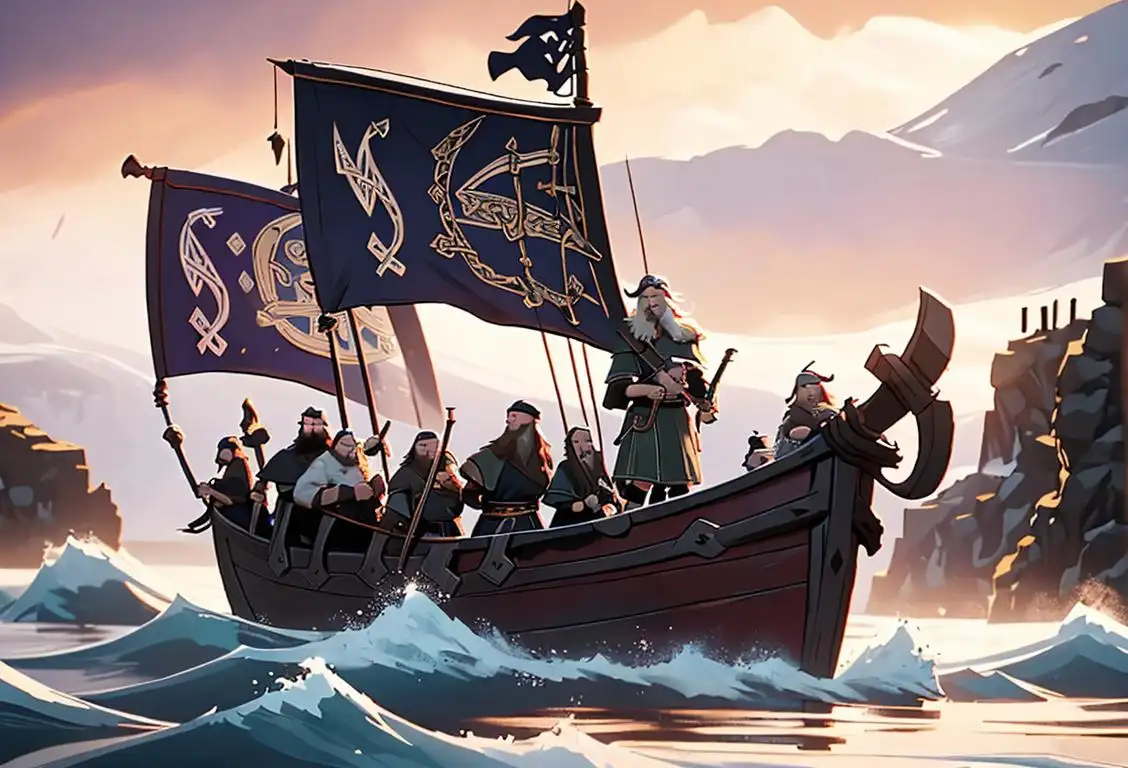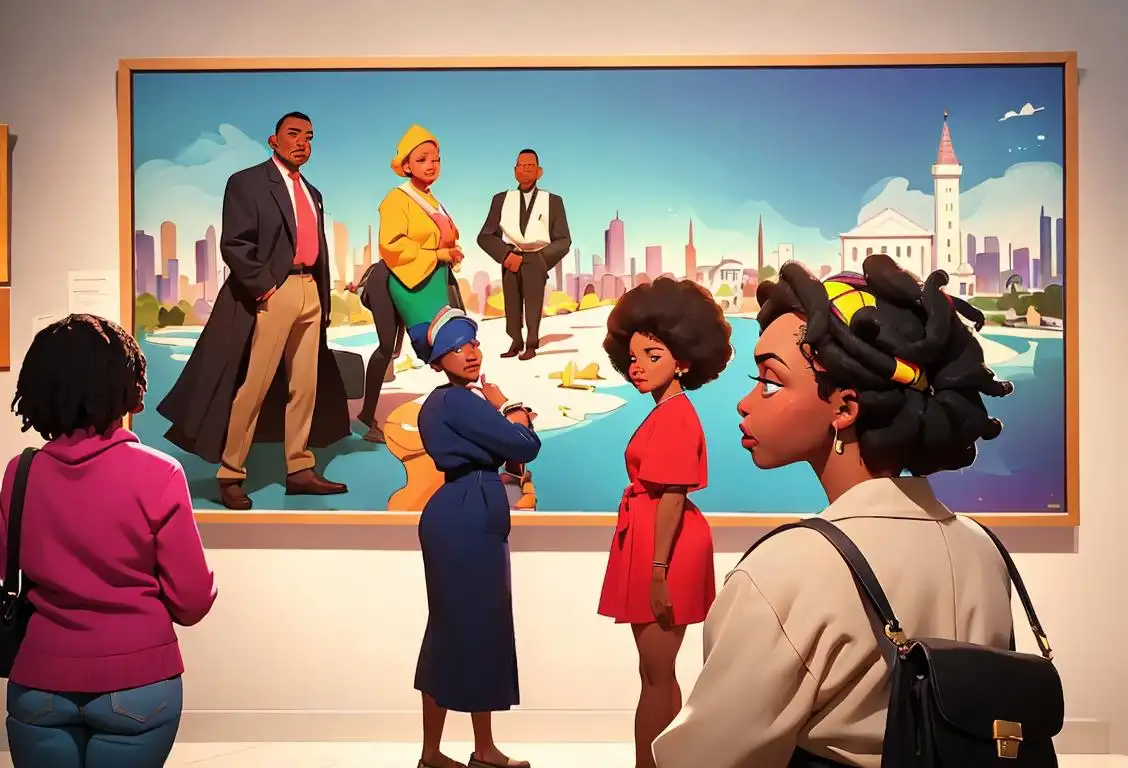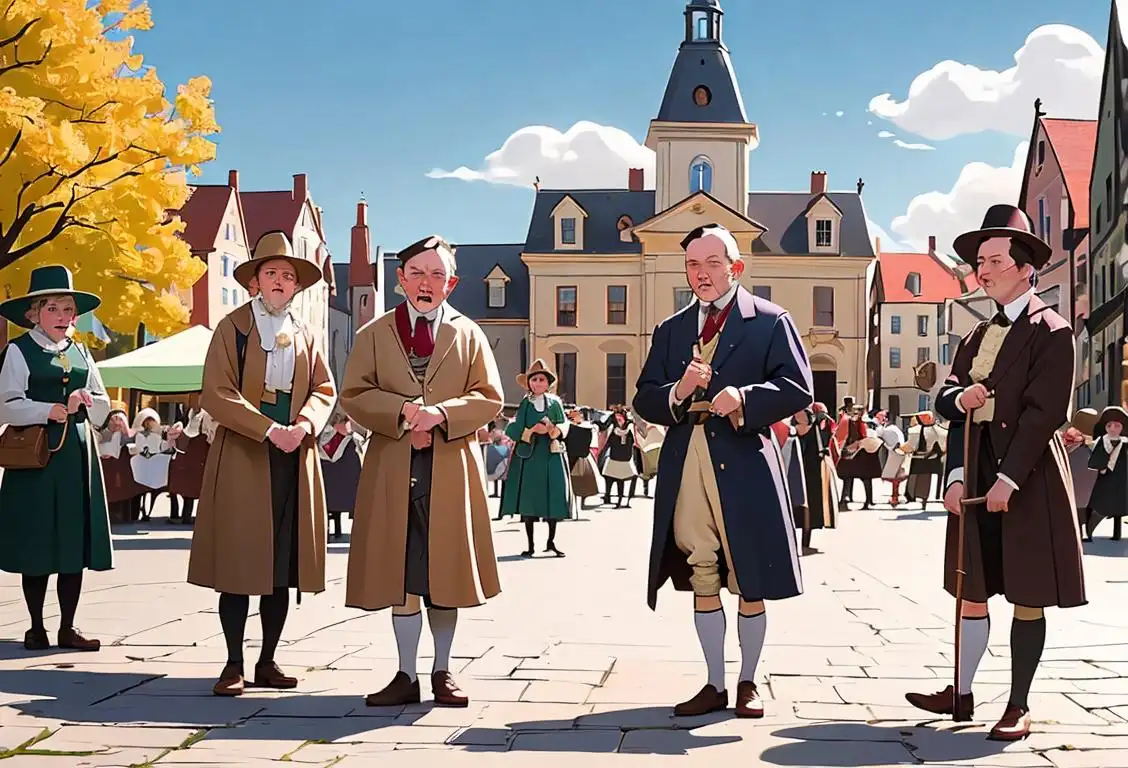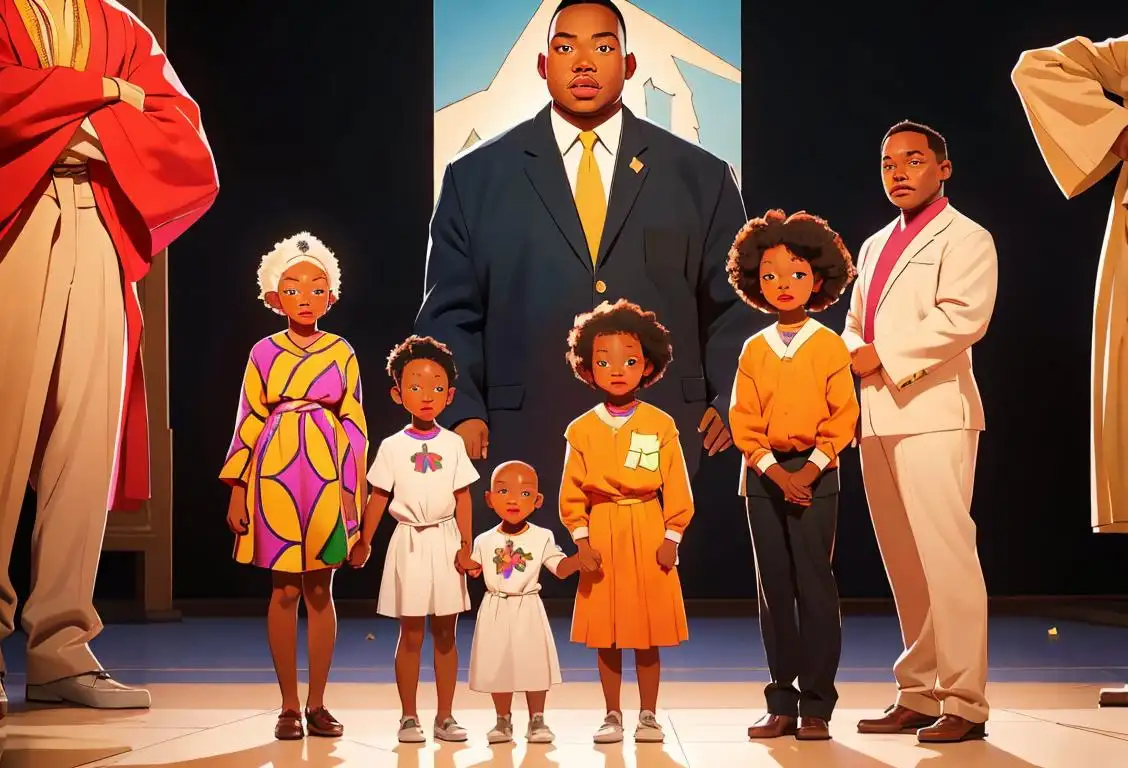National Vikings Day

Ahoy, me hearties! Get ready to set sail on the glorious seas of National Vikings Day! This swashbuckling celebration offers a chance to dive into the captivating world of ancient Norse warriors and embrace your inner Viking. So sharpen your axes, don your horned helmets (don't worry, we'll debunk that myth later), and let's embark on an adventure filled with plundering, pillaging, and a whole lot of fun!
When is Vikings Day?
It's national vikings day on the 30th March.
The Viking Invasion of the Internet
Every year on March 30th, National Vikings Day takes the cyber realm by storm. It's a day dedicated to honoring the rich historical legacy of the Vikings, those fearless seafarers who sailed the rough seas and left an indelible mark on our collective imagination.
But you might be wondering, how did the Vikings conquer the internet and become the subject of a national day? Well, let's set sail through the internet's treacherous currents and unveil the fascinating origin of this peculiar holiday.
The earliest mentions of National Vikings Day date back to March 30th, 2016. On that day, the online community couldn't resist the allure of these legendary warriors, and the hashtag #NationalVikingsDay began to trend across various social media platforms. From longing for longships to sharing Viking-inspired memes, netizens feverishly celebrated the fierce spirit of these seafaring conquerors.
Since then, National Vikings Day has grown in popularity, with Viking enthusiasts from all corners of the globe joining the online festivities. It has become a day when people immerse themselves in Viking lore, share Viking-themed content, and revel in the Viking spirit.
Busting the Horned Helmet Myth
Now, let's address a longstanding misconception about the Vikings: the famous horned helmets. Contrary to popular belief, the Vikings did not actually wear helmets adorned with horns like some sort of mythological creatures. Historically speaking, there is no concrete evidence to support the existence of such helmets.
So, the next time you see someone donning a horned helmet for National Vikings Day, kindly inform them that they're more likely to find a unicorn than an authentic Viking sporting such headgear.
History behind the term 'Vikings'
793
The Raid on Lindisfarne
In 793, the Viking Age began with a dramatic event known as the Raid on Lindisfarne. A group of Norsemen, believed to be from Scandinavia, attacked the Lindisfarne monastery on the northeastern coast of England. This raid marked the first recorded Viking attack in history, showcasing the Vikings' seafaring prowess and their willingness to engage in plundering and raiding.
865
The Great Heathen Army
By the year 865, the Vikings had expanded their ambitions beyond sporadic raids. This marked the formation of the Great Heathen Army, a massive force consisting of Viking warriors from various Scandinavian regions. Led by legendary figures such as Ivar the Boneless and Bjorn Ironside, the Great Heathen Army launched an invasion of Anglo-Saxon England, seeking to conquer and establish their rule. This marked a significant turning point in Viking history, as they transitioned from raiders to conquerors.
911
The Treaty of Saint-Clair-sur-Epte
In 911, the Treaty of Saint-Clair-sur-Epte was signed between the Frankish King Charles the Simple and the Viking chieftain Rollo. This agreement granted the Vikings control over a significant region in northern France, which eventually became known as Normandy. The Vikings, now settled in their newly acquired territories, began to adopt and assimilate into the local Frankish culture, marking the transformation of the Vikings from invaders to settlers.
793
The Viking Expansion
Throughout the 9th and 10th centuries, the Vikings embarked on a remarkable era of expansion, exploring and colonizing lands far beyond their Scandinavian homelands. Known as the Viking Expansion, this period saw Viking voyages reaching as far as Greenland, Iceland, and even North America. They established trading routes, established settlements, and left a lasting impact on the societies they encountered. Their reputation as fierce warriors and adventurous seafarers spread throughout Europe and beyond.
1066
The Norman Conquest
In 1066, the Viking legacy played a significant role in shaping the course of English history. William the Conqueror, a descendant of the Viking chieftain Rollo, led the Norman forces in the famous Battle of Hastings, defeating the Anglo-Saxon King Harold II. This event, known as the Norman Conquest, marked the end of the Viking influence in England and the beginning of the Norman era. The Vikings' impact on English language, culture, and governance can still be seen today.
Did you know?
Did you know that Vikings were skilled navigators who used a navigation tool known as a sunstone to determine the position of the sun even on cloudy days? Talk about Viking ingenuity!Tagged
fun history cultureFirst identified
30th March 2016Most mentioned on
30th March 2016Total mentions
6Other days
Cowboys Day
Romania Day
African American Museum At Not Having To Spend Mlk Day
Hot Tea Day
Capital In Broad Day
Flag And Celebrated The Day
Chili Day
History Day
African American Museum On Mlk Day
Capital From Day









